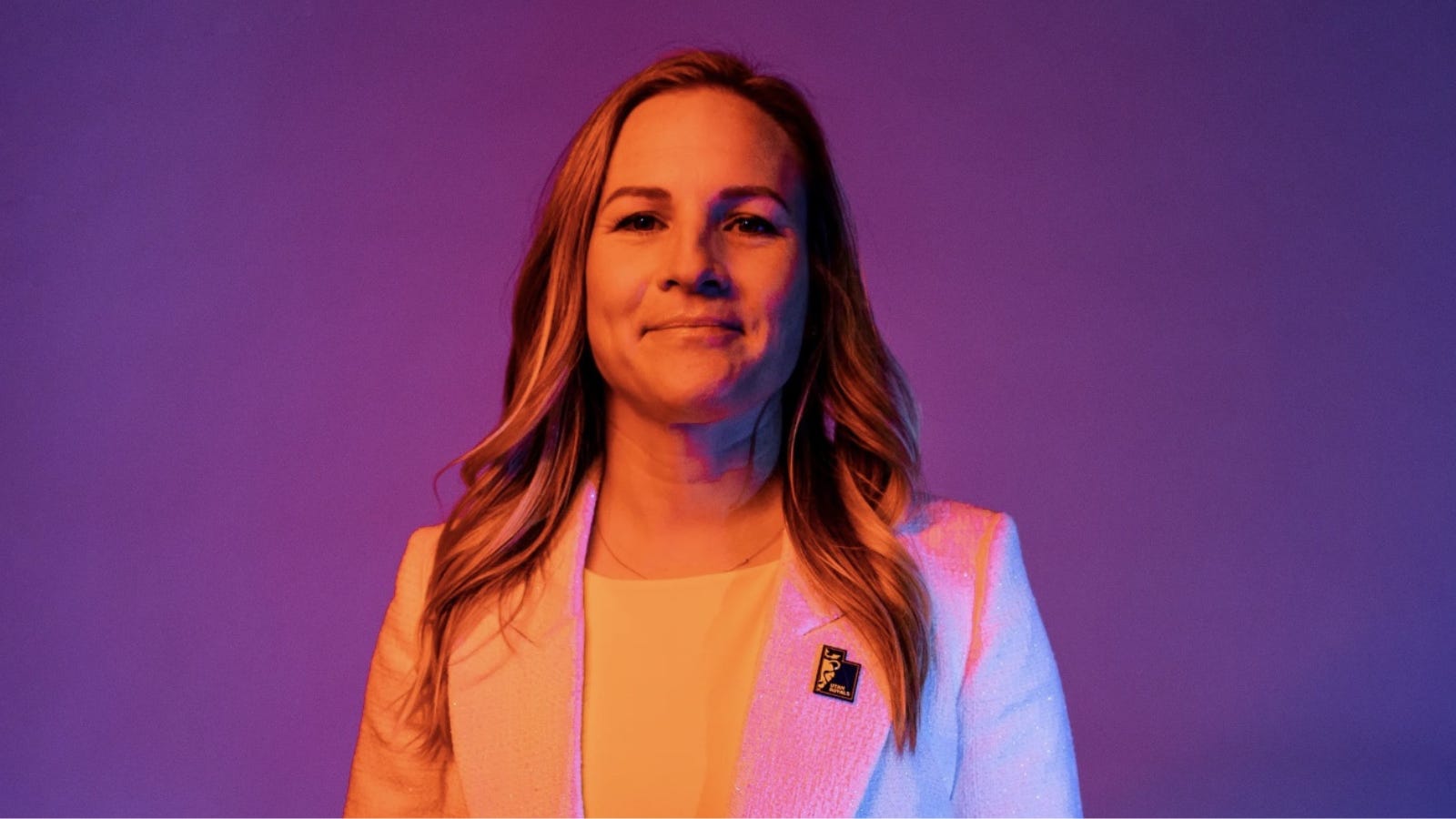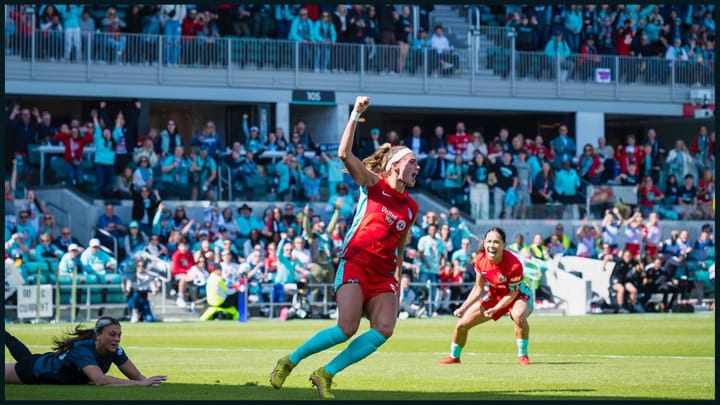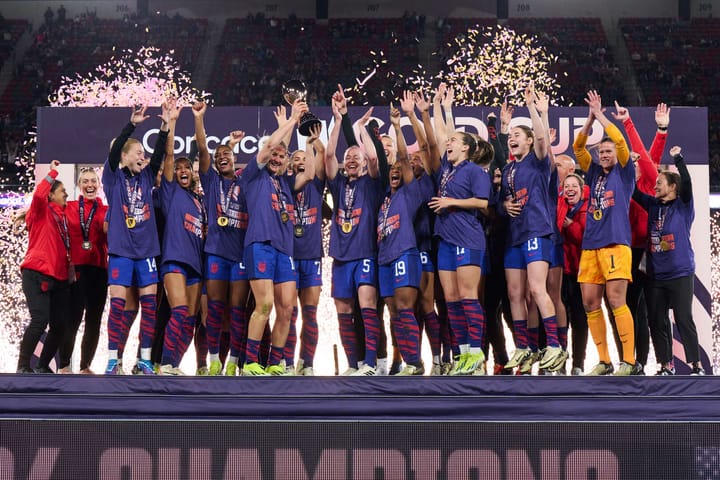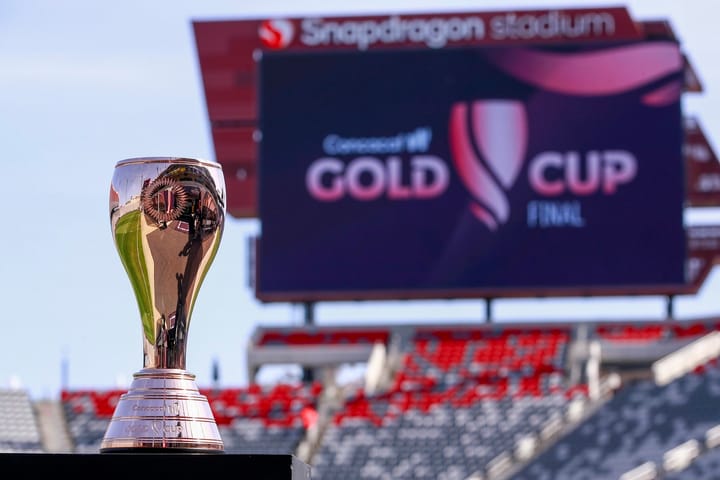The NWSL is expanding, but how does it work?
Bay FC and the Utah Royals will join the U.S. league in 2024, and on Friday the 15th of December 2023 an expansion draft will be held to help disperse current players.
Another two years have passed. Ah, didn’t it go quick?
Now, it is time for another NWSL expansion draft. Now, it is a time for chaos.
In 2024, the NWSL, the USA’s only professional football (soccer) league for women and non-binary people, will be adding two more teams to the mix.
The new clubs are Bay FC (based in Northern California, the San Francisco-Oakland-San Jose area) and the Utah Royals (based in Sandy, Utah, a suburb of Salt Lake City).
This will be the third NWSL expansion draft since 2021. Back then, the league only had nine teams with Racing Louisville becoming the 10th. In 2022, Angel City and San Diego Wave joined the mix as the 11th and 12th members.
Next season, the NWSL will be up to 14 teams with two more set to join the league in 2026. One of those additional clubs arriving in the next round of expansion has already been announced. It is — for now — a nameless team that will be based in Boston, MA.
You can read all the latest NWSL expansion rules here, but I have broken down some of the key concepts and things to know below.

So how does an expansion draft work?
On Wednesday, the NWSL announced the rules and procedures for the 2024 expansion draft. The selection process will take place virtually on Friday, the 15th of December, and will be broadcast on CBS Sports Network.
In its simplest form, the expansion draft is when the two new clubs take players from the existing clubs to build out their squads from a player pool of current NWSL footballers.
Earlier this year, the NWSL announced the asset selection order for Bay FC and Utah Royals ahead of the expansion draft. As a result of that process, Bay FC received the first pick in the expansion draft. Utah will get the first pick in next year’s College Draft.
In total each team will select 12 players from the current squad lists of the 12 existing NWSL teams. So, that’s a maximum of 24 players total being taken.
With draft selections alternating between the two clubs. Each NWSL club can only lose two players from its current squad list.
Bay FC and the Utah Royals are allowed to select two players from the same existing NWSL team’s roster. In this case, the other expansion team would not be allowed to take any players from that team’s squad because they had maxed out the two-player departing rule.
Expansion draft picks cannot be traded between teams. They are also not compulsory. Bay FC or the Utah Royals could decide not to use all 12 picks.
Existing NWSL teams are allowed to make deals ahead of the expansion draft that would give them immunity. This is a way for clubs to let players have more input in their destiny rather than discover on draft day that they are heading for Northern California or Utah.
We saw an example of this in 2022 when the Chicago Red Stars traded defender Sarah Gorden and midfielder Julie Ertz, plus an international slot, to Angel City in exchange for roster protection in that expansion draft.
There are still six weeks until the 2024 expansion draft, so it’s important to keep in mind plenty could still change when it comes to the draft order or which clubs will be available for selection. Some could already have traded players or other assets to not participate in the draft.
There will be a maximum of three minutes between each selection. Although the two teams will be allowed to use two five-minute timeouts during the draft. The NWSL may call as many timeouts as it likes.
Here is a hypothetical start to the draft. Imagine it like so:
1. Bay FC: Alex Loera, KC Current
2. Utah Royals: Olivia van der Jagt, OL Reign
3. Bay FC: Izzy D’Aquila, Portland Thorns
4. Utah Royals: Elizabeth Ball, KC Current
Etc.
But NOT ALL players on the rosters of the existing 12 NWSL clubs will be up for grabs. Ahead of the expansion draft, the incumbent teams will publish a list of nine protected players that cannot be selected by Bay FC and Utah Royals.
In addition to that list of nine, certain other players are exempt from being selected in the expansion draft.
Here are the rules for players eligibility:
- A team is permitted to protect one additional unprotected player after the first expansion team selects a player from its roster. (Essentially each NWSL club’s protected list gets bolstered to 10 after it has already had one player taken from their squad list).
- Unsigned unrestricted and restricted free agents are not eligible to be selected in the expansion process.
- Under-18 players are not eligible to be selected in the expansion process.
- Individuals on the Discovery List of any team are not eligible to be selected in the expansion draft. (What is a Discovery List? Well, “Discovery” is when the league assigns an order of priority for teams to claim the “rights” of players not already under contract in the NWSL. In short, it is a list of about seven players that NWSL clubs want to have first dibs to sign in the future. You could put Sam Kerr on that list, you could put Grace Clinton on that list. Anyone currently unsigned in the NWSL, who is not a free agent. No player can be on two club’s Discovery Lists at the same time).
- Players with a “no trade” clause must be protected by their current club. They will take up a spot on the nine-player protected list.
- Finally, existing NWSL clubs are required to disclose to the league, along with the protected/unprotected designation, any players who a team believes will be unavailable to play by January 1, 2024, due to injury, retirement, loan, or any other reason. This information will be shared with the expansion teams. Thus, you are not allowing the expansion clubs to select a player who already has a reason not to play next season.

So what about free agents?
As already said, both unrestricted and restricted free agents1 are exempt from being selected.
For those that don’t know, an unrestricted free agent (UFA) is any player who has four or more years of service in the NWSL and is out of contract. They have total autonomy on where they choose to sign next in the league.
A restricted free agent (RFA) is any player who has three years of service and is out of contract. They have near-total autonomy but must remain in communication with their current club while they agree to potentially sign for a new team.
The current CBA rules state that RFAs are allowed to start contract negotiations with any team, but once they have agreed upon a new contract with a new club, their current team gets seven days to match the qualified offer. If the originating team decides not to match, the player is free to join the new team.
So, the window for Bay FC and the Utah Royals to sign UFAs and RFAs begins on the 20th of November and will end on the 12th of December. This is an exclusive signing window.
When the negotiation window shuts, three days before the expansion draft, all existing NWSL teams will then hand in their final contracted-player protected lists. All un-signed UFAs and RFAs will then wait until after the draft to sign with any of the 14 clubs.
Key NWSL offseason calendar dates:
- November 13: Expansion Teams placed at the top of Waiver Distribution Ranking Orders (All post-season waiver claims will be held until this date)
- November 19: Transfer Window Shuts
- November 20: Free Agents can sign with NEW Teams
- November 22: End-Of-Season Waiver Wire Concludes
- December 12: Transaction Moratorium + Protected List Deadline (Protected Lists Due from All Teams)
- December 15: Expansion Draft
- December 16: Transaction Moratorium Ends
Expansion teams building outside the draft
As an advantage to the two 2024 expansion teams, the NWSL has boosted their spending limit on transfer fees by $240,000.
In 2023, every club in the league was allowed $600,000 to spend on transfer fees or to increase a player’s wages over the maximum of $75,000. This is a model for maintaining parity in the NWSL.
In addition to having $840,000 in allocation money, (to spend on transfer fees, trades, wages or international slots etc.) both Bay FC and Utah Royals will be allowed to spend $500,000 on transfer fees without touching their allocation money limit.
This is a major advantage during this upcoming winter transfer window and an unprecedented move for the league. Previously, the NWSL offered $150,000 to expansion teams in additional allocation money. But, if they selected a USA national team player in the expansion draft they would pay up $75,000 per player.
So, in theory, that means either of the two 2024 expansion clubs could spend $740,000 on new players before they hit the same spending restrictions as the existing NWSL clubs.
Of course, while the enhanced transfer budget is an advantage, every other team in the NWSL and abroad knows that Bay FC and the Utah Royals have the money to spend. We could see existing NWSL clubs holding out for inflated fees during the offseason when it comes to negotiating with the expansion clubs.
Can players be acquired and then traded?
Players selected in the expansion draft can be traded. Hypothetically, if the Utah Royals pick up Ary Borges from Racing Louisville but she doesn’t want to play for them, she can negotiate her way out. Of course, the Royals would hold the “rights” to her existing contract.
Similarly, Bay FC (or any other NWSL team) could call up the Utah Royals and ask them to select a player during the expansion draft and then trade for that player. Thus making a pick in the expansion draft and immediately trading it on. Expansion teams can acquire other assets for selected players but they cannot trade the pick itself.
This happened in 2022 when the Houston Dash’s Kristie Mewis was selected in the expansion draft by the San Diego Wave and then was traded to NJ/NY Gotham FC for $200,000. The Dash received $75,000 from the NWSL for losing Mewis, a USA international. However, the Wave were able to cash a profit of $125,000, by sending Mewis onto Gotham, and in turn could spend that money on whatever they wanted to.
The same mechanism cannot be used for players who are signed by Bay FC or Utah Royals using transfer fees. To avoid those clubs flipping players immediately, especially considering they have $500,000 exempt from the salary cap rules, the NWSL has created a rule that stipulates any player acquired by the 2024 expansion teams using transfer fees, during the offseason, cannot leave the club until the secondary transfer window in the late Spring/Summer of the 2024 season.
READ MORE: From Royals to Royals: It's nice to see Kelly Cousins (née Chambers) again
It sounds wild, but in the NWSL if you have only played one or two seasons, the clubs maintain the “right” to sign you to a contract in the league even if you have not yet signed a contract with them.
Essentially, your “rights” can be traded to any team inside the league and you have no choice. The same can be said of under-contract players. However, once players qualify for free agency they are allowed to make choices more freely when out of contract. They can then choose to sign without a club being involved.
To clarify, in the NWSL, if you are under contract or you are not yet a free agent then you can potentially have no say in a transfer. A club has the “right” to send you wherever they like. It’s pretty dodgy. ↩




Comments ()